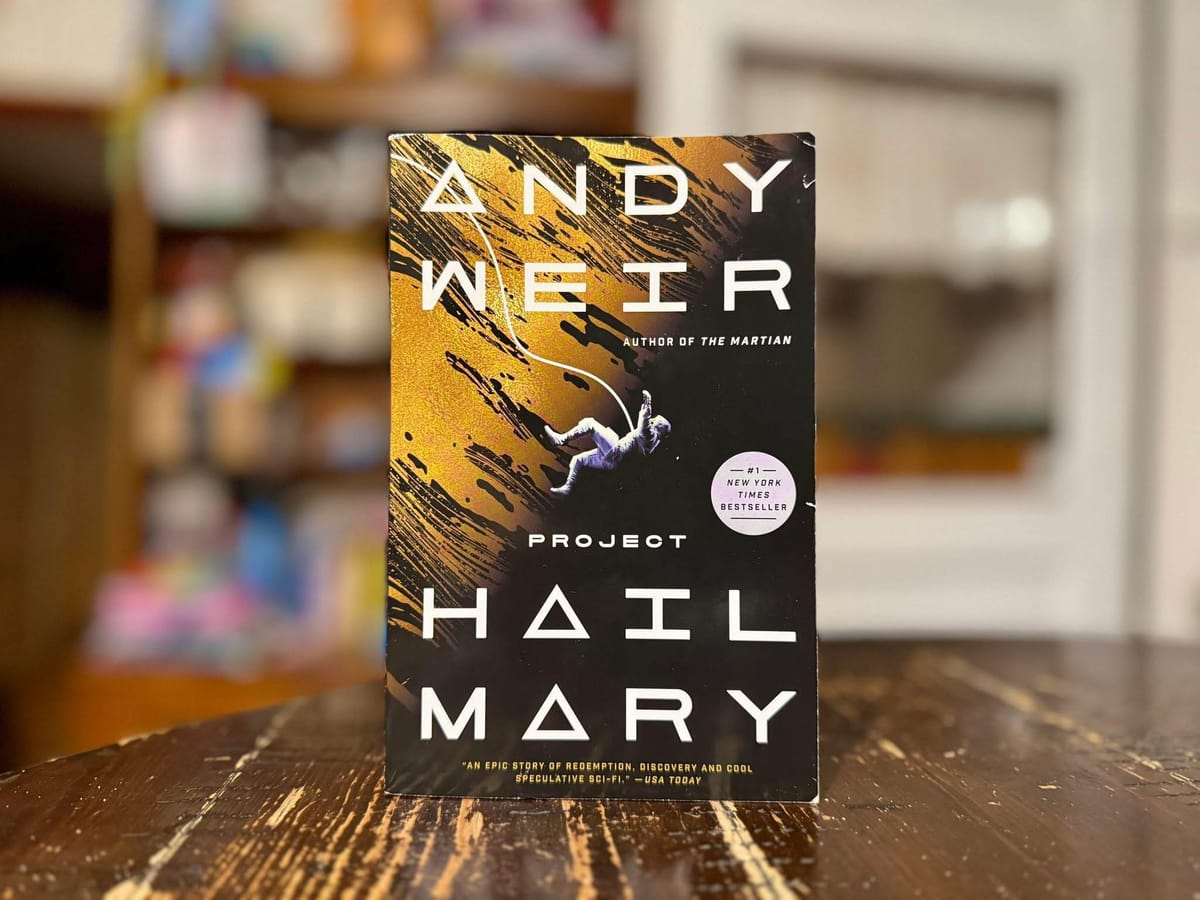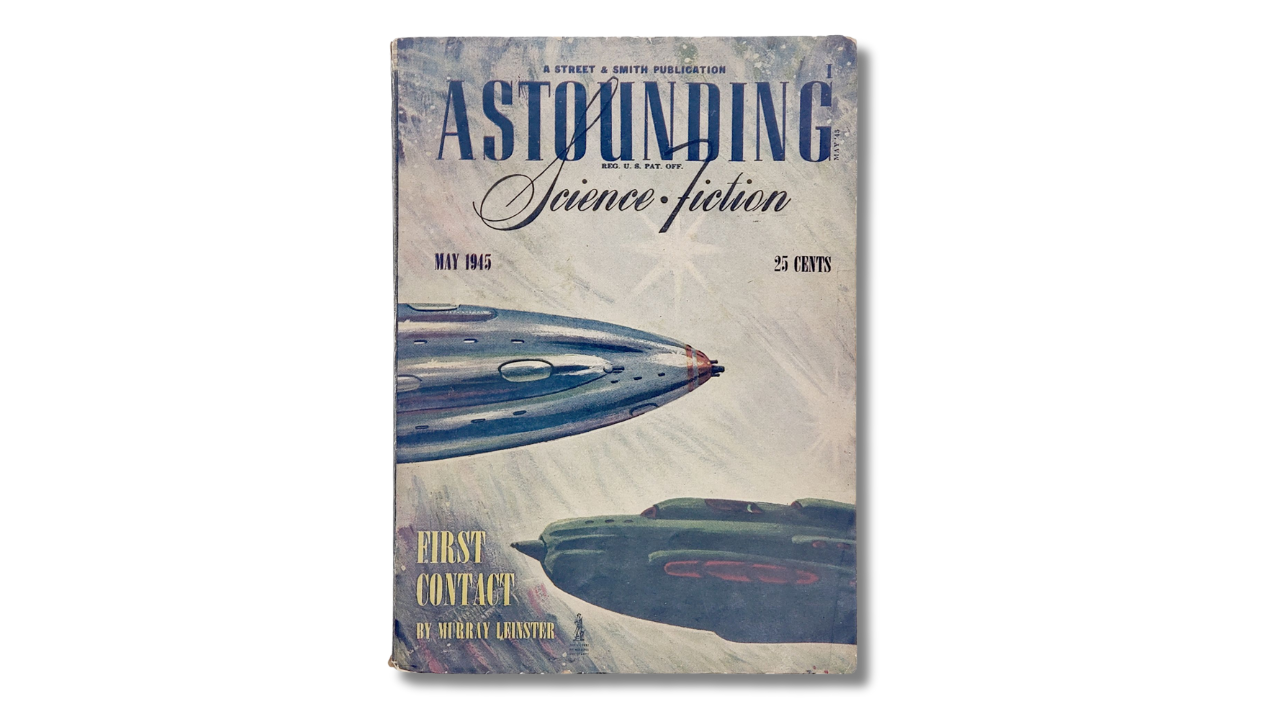Empirical steps
Andy Weir's Project Hail Mary harkens back to an older science fiction tradition

With his 2011 novel The Martian, Andy Weir made the rare crossover from genre fiction to mainstream success, following the story of stranded astronaut Mark Watney as he contends with the challenge of surviving on Mars with some very limited supplies. His latest, Project Hail Mary, Weir picks up a similar mindset: an astronaut (and humanity) is facing an existential problem. How do you solve it?
In doing so, Weir taps into a longer science fiction tradition: characters solving complicated problems based on the knowledge and resources they have at their disposal. It's something that I suspect harkens back to the personalities that made up the early modern genre: science and technology enthusiasts who found some level of comfort in everything from the technical specifications of radio to building model railroads.
In 1929, magazine publisher Hugo Gernsback published the first installment of Amazing Stories, the first magazine dedicated entirely to what he called "scientifiction." But prior to that, he had established a career in the electronics industry, helping to kickstart the amateur radio scene, imported electronics parts from Europe, and set up magazines like Modern Electronics and The Electrical Experimenter.
In 1939, author John W. Campbell Jr. took over the editorial reins of Astounding Science Fiction and essentially issued an edict to those wanting to publish stories in his magazine: he wanted to publish stories that better adhered to reality. His educational background was in science and technology: he attended the Massachusetts Institute of Technology (MIT) before he was kicked out in 1931, and ended up at Duke University, where he studied physics. As Brian Aldiss put it: "He forced his writers to think much harder about what they were trying to say, and clamped down on the Gosh-wowery."
More than anyone, Campbell helped to strike the mold for what people thought of as science fiction for decades: stories about people using science and technology at some point in the future, alongside a society that was rapidly modernizing in the aftermath of the Second World War.

There's one story that comes to my mind when when looking at this particular strand of science fiction: Murray Leinster's "First Contact." (If you don't have it handy, can read it this scan of a collection of his stories here.) In the latter, the crew of a spaceship called the Llanvabon arrive in the the Crab Nebula and encounter an alien spaceship, and quickly work to make contact with its crew.
What I like about this story is we watch the characters figure out what they're facing with some simple logic: when the ship sounds an alarm that they've detected something:
Tommy Dort said meditatively: "D'you know, sir, I saw something like this on a liner of the Earth-Mars run once, when we were being located by another ship. Their locator beam was the same frequency as ours, and every time it hit, it registered like something monstrous, and solid."
Observation: inference. Tommy knew what it was like when a ship detected it was being detected by a locator beam, and therefore, they know that's what's happening now.
From there, the characters know that they have a rational list of decisions they can make. They know they have an alien ship before them, but they don't know their intentions. They do know that first contact has the potential to go poorly, so they make preparations to destroy their navigational data and star charts.
From there, the crew has to figure out their alien counterparts: learning about their biology and technology. They also realize that while this first contact has been friendly so far, they can't really trust one another: if one tries to go home first, they run the risk of getting killed by the other or leading them to their home planet. The story comes to a resolution that's satisfactory to both crews, and the entire thing is a neat exploration of how people can break a problem down step by step and figure out and come out with a happy ending.
Weir's The Martian and Project Hail Mary follow this model pretty well:His reluctant astronaut Ryland Grace wakes up from stasis light years from home without his memories and with a pair of dead crewmates. Weir fills us in by bouncing us between convenient flashbacks as Grace's memory returns little by little, and we realize the problem that humanity is facing: scientists have begun to realize that the sun has started dimming, and it seems to be infected with some sort of alien microbe, which they call "Astrophage." Grace is brought on to help study it, and they realize that while other stars in the immediate area have begun dimming – hinting at their own Astrophage infections – there's a single planet nearby that isn't: Tau Ceti.
Observation leads to inference. This is science at its most basic: the collection of empirical evidence and drawing conclusions from those observations. If our sun and others are dimming and Tau Ceti's isn't, it stands to reason that there's a reason. One realization leads us to a next step: send a mission and find out. Make more observations and make the next steps accordingly.

I'd be very surprised if Weir hadn't read "First Contact" at some point in his life: one of the twists is that Grace isn't alone in the Tau Ceti system: another civilization made the same observations and reached the same conclusions, and went out to try and find a solution to the problem. Grace and his new friend – who he calls Rocky – have to figure out how to communicate with one another, and use the same bedrock understanding of the universe to unlock a way to communicate and to find common ground and to ultimately try and solve the problem that plagues both of their civilizations.
You can essentially trace the entire tradition of science fiction to fantasy literature: a form of storytelling that at its broadest contours encompasses any sort of imaginary elements. Project Hail Mary is just the most recent entry in a chain of what we'd call "Hard Science Fiction," which the SF Encyclopedia cites Allen Steele defining as " form of imaginative literature that uses either established or carefully extrapolated science as its backbone."
The crew of the Llanvabon, Grace, Rocky and the problem of Astrophage only exist in our imaginations, but it's the approach that Weir and Leinster take in telling the story that I don't see quite as often these days, and that's what makes this book stand out for me: it's the solving of problems and their crew's ability to adapt to curveballs that makes Project Hail Mary and "First Contact" so gripping.
Reader behavior and preferences ebb and flow and the history of genre literature has witnessed all types of stories grow and fade in popularity. Editors and authors who followed found other ways to utilize the genre's trappings, using it to explore the psychological, sociological and political aspects of the human condition to great – and lasting – effect. There's a cottage industry of critics who'll occasionally take up an argument that it's a shame that science fiction isn't as inspirational or optimistic as it once was – really, just a series of tired complaints that there's too much of that soft science junk out there – and that authors and editors need to get back to what the genre used to be.
But what I think is missed in those arguments is that what makes stories like "First Contact," The Martian, and Project Hail Mary – and others like James S.A. Corey's The Expanse, Annalee Newitz's The Terraformers, Cixin Liu's Three-Body Problem, Kim Stanley Robinson's Red Mars or Aurora, and plenty of others – stand out isn't that their authors are rigidly adhering to reality, but that they're telling their stories by using their characters to solve the physical, often-science-based problems in front of them in an empirical way. Furthermore these are stories that recognize that their problems aren't purely physics puzzles to be solved: they're intensely interested in how these problems affect society at large.
We live in a world with plenty of those types of technological and scientific challenges ahead of us, and these are the types of stories that help to inspire people to figure out creative solutions around those problems to build futures that look a little better for those that'll follow us.
